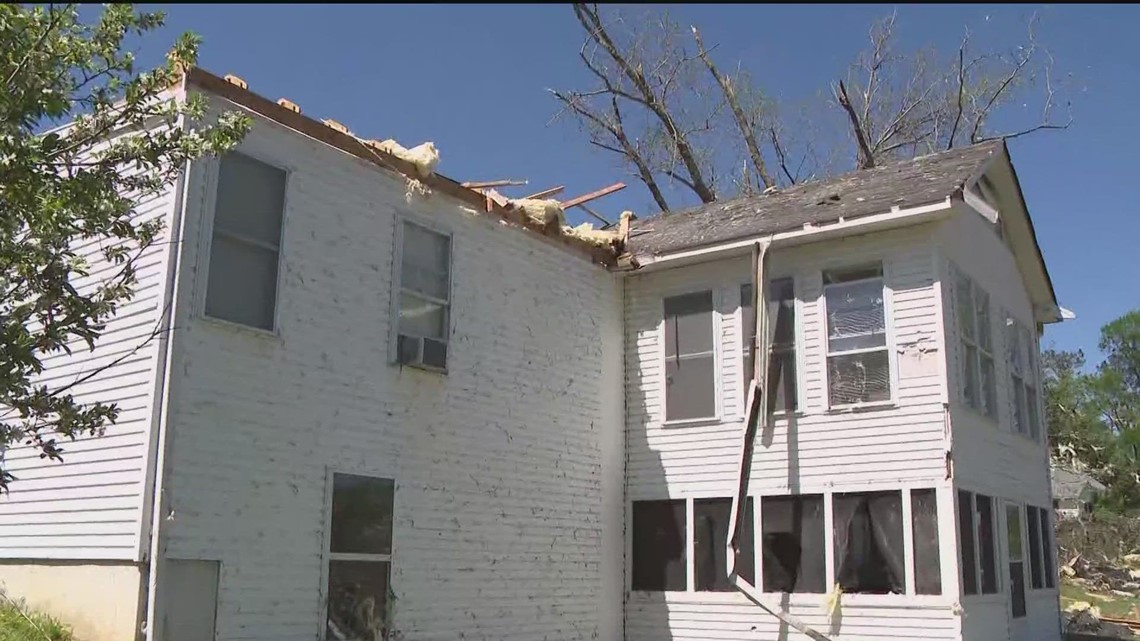This is where EF-2 tornado damage occurred in Conyers
The storm touched down before midnight and wreaked havoc on the area. The EF-2 tornado damage occurred in Conyers, Georgia, early this morning, causing significant damage to the area. The storm touched down before midnight and caused significant structural damage. The National Geographic team surveyed the north side of I-20 to map out the northern side of the storm’s core, which included the destruction of huge hardwood oak oak trees and large hardwood trees. They collected dozens of data points to provide a detailed picture of the damage, including information about the type of damage sustained and the structure or integrity of the houses before the storms. The team also found that pine trees were snapped in half and larger hardwoods were also uprooted, several houses had trees crashing down onto them, and siding and roof damage were caused. The researchers then used radar data to map the storm's final path.

Published : a month ago by Author: Melissa Nord in Weather
The storm touched down before midnight and wreaked havoc on the area.
Example video title will go here for this video
Example video title will go here for this video
Due to downed trees and wires, they had to park and walk quite a distance early this morning. Some areas were still inaccessible. So, after getting their sight on it briefly, they traveled to the north side of I-20 to map out the northern side of the storm’s core.
We started near McCalla Street. Huge hardwood oak trees were uprooted across Celia Curns’ house. One – came straight through it. She and her husband were in their bedroom at the time. Celia had just gotten up to go to the restroom when she heard the winds picking up.
By a miracle, the massive tree cut through the ceiling but stopped before reaching the floor. The top of it hit another huge oak tree in the back of the house. That stopped it from cutting the entire depth of the house in the back.
It’s through that they collect dozens of data points – information about the type of damage that was sustained and the structure or integrity of the houses before the storms. That is all pieced together like a collage, along with radar data, to get the clearest picture of how the storm event unfolded.
There, we saw a big difference in the span of the damage. Left and right, pine trees were snapped in half. Bigger hardwoods were also uprooted. Several houses had trees crashing down onto them. And there was siding and minor roof damage.
By a miracle, the large pine tree missed their bedroom window. They had just spent Easter Sunday afternoon on the back patio and deck, enjoying the afternoon. Shingles were plucked off the roof. A glass door was broken. The pillars holding up the awning on the front porch were knocked over. But the family itself – all safe and thankful to be that way. The Franklins have lived in this house for over 20 years.
But it was how it was assembled and then later ripped apart that they needed to get a closer look at. The roof had been fastened with bolts to joints with the walls of the top floor. The winds were so strong that they sheared off part of the roof. It left the anchor point attachments exposed. Shingles and roofing bits were strewed across the lawn. One large section of siding ended up tangled in a nearby tree. Insulation from the attic was littered throughout the yard and into other surrounding tree branches.
Homeowner Bonnie Penniman was home at the time. She got the notification on her home just moments before the storm hit. She dashed to the basement. Luckily, it was just in the nick of time. She would have otherwise been upstairs in bed, located underneath part of the torn-off roof.
After mapping out the core of the worst damage, they then circled back to get “firsts and lasts” – the starting point of the twister and then the finish point. They later mesh all of their field data points with the radar information from the event to map out the final path of the storm.
Topics: Tornadoes
